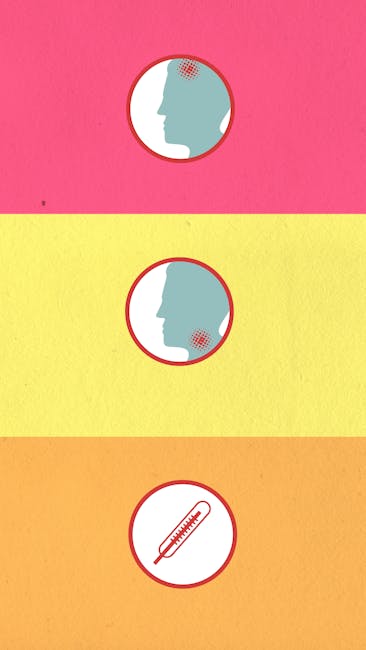Oropouche Virus: A Comprehensive Guide to Transmission, Symptoms, and Prevention
Oropouche Virus: A Comprehensive Guide to Transmission, Symptoms, and Prevention
The Oropouche virus (OROV) is an emerging arbovirus of significant concern, causing outbreaks of fever illness across South America. Understanding its transmission, symptoms, prevention, and the current research surrounding it is crucial for public health initiatives and individual safety. This comprehensive guide delves into various aspects of the OROV, providing a detailed overview for healthcare professionals, researchers, and the general public.
Understanding the Oropouche Virus
Oropouche virus belongs to the family Peribunyaviridae, genus Orthobunyavirus. It’s a single-stranded, negative-sense RNA virus, meaning its genetic material is RNA, and the RNA strand is complementary to the mRNA used in protein synthesis. This makes it distinct from other viruses like influenza or HIV, which have different RNA structures and replication methods. The virus is primarily transmitted through the bite of infected mosquitoes, predominantly species within the Culicoides genus. While there have been sporadic cases linked to other vectors, mosquitoes are considered the primary mode of transmission.
Geographic Distribution and Prevalence
Historically, OROV outbreaks have been concentrated in South America, specifically in the Amazon Basin and surrounding areas. Countries such as Brazil, Peru, Colombia, Venezuela, and Bolivia have reported significant outbreaks. However, changing climatic conditions, deforestation, and increased human activity in affected regions could potentially expand the geographic distribution of the virus in the future. Monitoring the virus’s spread is crucial to prevent further expansion and large-scale outbreaks.

Transmission of the Oropouche Virus
The primary route of OROV transmission is through the bite of infected Culicoides mosquitoes. These small biting midges are common in tropical and subtropical regions, and their abundance can vary significantly depending on environmental factors like humidity, temperature, and rainfall. The virus replicates within the mosquito’s body, and transmission occurs when an infected mosquito bites a human, injecting the virus into the bloodstream.
There is currently no evidence suggesting that OROV can be transmitted through direct contact with infected individuals, bodily fluids, or contaminated surfaces. However, maintaining good hygiene practices is always recommended as a general preventative measure against a wide range of illnesses.
Symptoms of Oropouche Fever
Oropouche fever, the illness caused by OROV infection, is characterized by a sudden onset of flu-like symptoms. The incubation period, the time between infection and the appearance of symptoms, is typically between 2 to 7 days. Common symptoms include:
- High fever
- Severe headache
- Muscle pain (myalgia)
- Joint pain (arthralgia)
- Retro-orbital pain (pain behind the eyes)
- Fatigue
- Nausea and vomiting
- Rash
The severity of symptoms can vary widely among individuals, ranging from mild to severe. In most cases, symptoms resolve within a week to 10 days without specific medical intervention. However, in some cases, particularly among vulnerable populations like young children or the elderly, complications can arise. Severe cases may require hospitalization and supportive care.
Diagnosis and Treatment
Diagnosing Oropouche fever relies primarily on clinical symptoms and a thorough epidemiological investigation. Since there’s no specific treatment for OROV infection, treatment is largely supportive, focusing on managing symptoms such as fever, pain, and dehydration. Over-the-counter medications such as paracetamol can help alleviate fever and pain. Ensuring adequate hydration is also crucial. In severe cases, hospitalization might be necessary to provide supportive care and manage potential complications.

Laboratory testing, including serological tests (detecting antibodies against the virus) and molecular tests (detecting viral RNA), can confirm the diagnosis. However, these tests are often not readily available in all affected regions, making clinical diagnosis based on symptoms a necessity in many cases.
Prevention and Control
Preventing Oropouche virus infection relies heavily on controlling mosquito populations and protecting oneself from mosquito bites. Several strategies can be employed:
- Mosquito control: Public health initiatives focusing on eliminating mosquito breeding sites, using insecticides, and implementing larvicide programs are crucial in reducing the overall mosquito population.
- Personal protection: Using insect repellents containing DEET or picaridin, wearing long-sleeved shirts and pants, especially during peak mosquito biting times (dawn and dusk), and using mosquito nets are effective personal protective measures.
- Environmental management: Reducing standing water around homes and other areas can help control mosquito breeding.
- Vaccination: Currently, there is no licensed vaccine for Oropouche virus. Research is ongoing to develop an effective and safe vaccine.
Research and Future Directions
Ongoing research focuses on several key areas concerning the Oropouche virus:
- Developing a vaccine: This remains a high priority, and significant efforts are being made to identify effective vaccine candidates and evaluate their safety and efficacy.
- Understanding virus evolution: Studying the genetic evolution of OROV is vital to predict future outbreaks and adapt preventative strategies.
- Improving diagnostic tools: Developing faster, more accessible, and accurate diagnostic tests is essential for effective surveillance and outbreak response.
- Vector control strategies: Research continues to explore innovative and effective methods for controlling Culicoides mosquitoes.
- Clinical management: Investigating the long-term effects of OROV infection and developing improved clinical management protocols are crucial areas of research.
Conclusion
The Oropouche virus represents a significant public health challenge, particularly in South America. Understanding its transmission, symptoms, and prevention is crucial for mitigating the impact of future outbreaks. While there is currently no vaccine, effective personal protective measures and public health initiatives focused on mosquito control are key strategies in preventing infection. Continued research and global collaboration are essential for advancing our understanding of OROV and developing more effective prevention and control measures.





